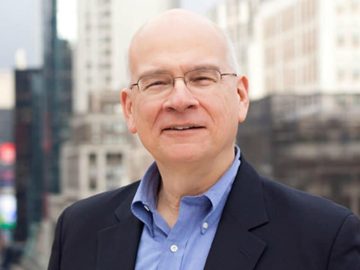Article
Why Plant Churches?
Tim Keller

The continual planting of new congregations is the most crucial strategy for (1) the numerical growth of the body of Christ in a city and (2) the continual corporate renewal and revival of existing churches.
The normal responses to discussions about church planting run something like this:
“We already have plenty of churches for all the new people in the area. Let’s get them filled before we start new ones.”
“The churchgoing public is a shrinking pie. A new church here will just take people from churches and weaken everyone.”
“Help the struggling churches first. We need better churches, not more.”
The wrong assumptions on which these statements rest will become clear if we ask, “Why is church planting so crucially important?”
A. We Want to Be True to the Biblical Mandate
- Jesus’ essential call was to plant churches – Virtually all of the great evangelistic challenges of the New Testament are basically calls to plant churches, not simply to share the faith. The Great Commission (Matt. 28:18-20) is a call to baptize—incorporation into a worshiping community with accountability and boundaries (cf. Acts 2:41-47). Much traditional evangelism aims to get a “decision” for Christ that often never results in changed lives. Only a person evangelized in a worshiping and shepherding community can be sure of finally coming into vital, saving faith.
- Paul’s whole strategy was to plant urban churches – Paul had a rather simple twofold strategy. First, he went into the largest city of a region (Acts 16:9,12) and, second, he planted churches in each city (Titus 1:5). His two controlling assumptions: (a) the way to most permanently influence a country was through its chief cities, and (b) the way to most permanently influence a city was to plant churches in it.
Response: “But that was in the beginning,” many people say. “Now our country is filled with churches. Why is church planting important now?”
B. We Want to Be True to the Great Commission
Consider these facts:
- New churches best reach new generations, new residents, new people groups
- First, younger adults have always been disproportionately found in newer congregations. Long-established congregations often have habits that do not reach younger generations effectively.
- Second, new residents almost always are reached better by new congregations. In a new church, new residents tend to have equal power with longtime area residents.
- Third, new sociocultural groups in a community are always reached better by new congregations. Also, new racial groups in a community are best reached by a new, intentionally multiethnic church.
- Finally, brand-new immigrant groups nearly always can be reached only by churches ministering in their own language. Often a new congregation for a new people group can be planted within the overall structure of an existing church.
- New churches best reach the unchurched—period. – Dozens of denominational studies have confirmed that the average new church will bring six to eight times more new people into the body of Christ than an older congregation of the same size. This does not mean established churches cannot win new people, but because many of a new church’s leaders recently were unchurched, the congregation is far more sensitive to the nonbeliever’s concerns.
Response: “But,” many people say, “what about all the existing churches that need help? You seem to be ignoring them.” Not at all.
C. We Want to Continually Renew the Whole Body of Christ
We do not have to choose between church planting and church renewal. In fact, planting churches is one of the best ways to revitalize nearby older churches and renew the whole body of Christ. Why?
- New churches bring new ideas to the whole body. There is no better way to teach older congregations about new skills and methods for reaching new people groups than by planting new churches that serve as an “R&D Department.”
- New churches are one of the best places to identify creative, strong leaders for the whole body. New congregations attract venturesome people who value creativity, risk, innovation and future orientation and whose gifts otherwise would not be utilized.
- The new churches challenge other churches to self-examination. The success of new churches often challenges older congregations to finally define their own vision, specialties and identity. The growth of the new congregation gives hope to older churches and may even bring about humility and repentance for defeatist attitudes.
- New churches may be an “evangelistic feeder” for a whole community. The new church often produces many converts who end up in older churches for a variety of reasons. Many gravitate to an established, more stable congregation where customs and culture feel more familiar.
- A new church in the community usually confronts existing churches with the major issue of “kingdom-mindedness.” New churches inevitably attract some people out of existing churches. An existing church’s attitude to new church development is a test of whether its mindset is geared to its own institutional turf or to the overall kingdom of God in the city. Any church more upset by small losses than grateful for the kingdom’s large gains is betraying its narrow interests.
Summary
We can now see the false premises underlying the objections to church planting. In actuality, new churches reach people wherever the population is changing. If new people or new groups of people are coming in—even though the net population figure is stagnant—new churches are needed. New church planting is the only sure way to increase the number of believers in a city and is one of the best ways to renew the whole body of Christ. The evidence for this statement is strong—biblically, sociologically and historically. We must beware that a lack of kingdom-mindedness doesn’t blind us to this.
Historical lessons
In 1820, there was one Christian church for every 875 U.S. residents. From 1860 to 1906, U.S. Protestant churches planted one new church for every increase of 350 in the population, bringing the ratio by the start of World War I to just one church for every 430 persons. In 1776, just 17% of persons in the United States were categorized as “religious adherents,” but by 1916 that figure had risen to 53%.
After World War I, however, church planting plummeted for a variety of reasons. One of the main reasons was “turf.” Once the continental United States was settled, with churches in each town, older churches strongly resisted any new churches being planted in “our neighborhood.”
Now church attendance and adherence overall in the United States are in decline. This cannot be reversed in any other way but planting churches at such a rate that the number of churches per 1,000 population begins to grow again.
This post was adapted with permission from a longer article at Redeemer: City to City.




